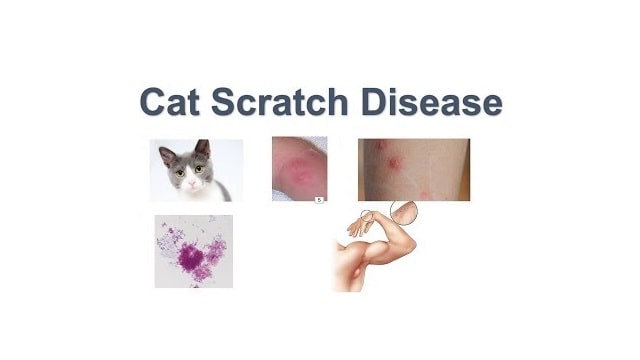Cat Scratch Disease
Cat Scratch Disease (CSD) is a disease that attacks humans related to scratches, bites, and licks from cats where the process can cause CSD. This disorder is also known as subacute regional lymphadenitis, a bacterial infection that affects the lymph nodes that drain the inoculation site.
About 3-14 days after the skin is broken, a mild infection may develop at the site of the scratch, bite, or lick. The infected area may appear swollen and red with a raised, round lesion or even pus. If you experience this problem, it is a good idea to get checked by a doctor immediately.
Symptoms of Cat Scratch Disease
Early symptoms can be the appearance of small papules (bumps) that will be visible for several days after the scratch or bite. The lump is called an ” inoculation lesion “, which is when there is a wound where bacteria will enter the body. Lumps that occur in the lymph nodes look like insect bites and after some time can swell and soften.
These swollen lymph nodes are most often found in the armpit or neck area. They are about 2-5 centimeters in diameter and may be accompanied by larger swellings beneath the skin. These swollen areas of skin also feel warm and red.
Lymphadenopathy or swelling of the lymph nodes, especially in the armpits, head, and neck, appears about 1-3 weeks after the scratch. This swelling usually disappears within 2 to 4 months, or even longer. Some other symptoms, such as headache, joint pain, weakness, loss of appetite, and flu-like symptoms can persist for several weeks.
Other symptoms of cat scratch disease include:
- Fatigue.
- Headache.
- Mild fever with a temperature of 37°C but below 38°C.
- A sore body.
Less common symptoms of cat scratch disease include:
- Loss of appetite.
- Weight loss.
- Sore throat.
Causes of Cat Scratch Disease
The cause of this disease is the bacteria Bartonella henselae and this microorganism can be found all over the world. This bacteria lives in the saliva of infected cats but does not make your pet sick. Most cases are caused by kittens, but adult cats can also be the cause of this disease.
In fact, kittens or adult cats can carry the bacteria for months. Additionally, fleas can spread the bacteria between cats. A person can get the disease if an infected cat licks an open wound on your body or touches the whites of your eyes. Also, you cannot get cat scratch disease from another person.
Cat Scratch Disease Diagnosis
Doctors generally diagnose cat scratch disease based on an examination and asking if the person has cats or frequently interacts with them. During the examination, the doctor will need to look for signs of scratches or bites from the cat as well as common symptoms, such as swollen lymph nodes.
In addition to anamnesis and symptoms, cat scratch disease diagnosis can be established through blood tests or biopsies (sampling) of the related lymph nodes. This blood test can be done through the polymerase chain reaction (PCR) method to detect B. henselae bacteria in the body.
Cat Scratch Disease Prevention
Prevention can start by being careful of stray cats and vaccinating pets. If you are worried about this disease because the disease is not common and usually causes mild problems. Some steps that can help protect you, especially children, include:
- Avoid rough play when playing with cats to avoid being scratched or bitten.
- Wash your hands after handling cats.
- Regularly bathe your cat to prevent fleas.
- If you are scratched by an animal, wash the area with soap and water.
Treatment for Cat Scratch Disease
Initial treatment if bitten and/or scratched by a cat is to immediately wash and disinfect the wound. In healthy people, cat scratch disease can heal on its own without any treatment and medication. However, it is still better to treat the wound. To relieve pain, you can take acetaminophen or ibuprofen so that the problem can be resolved. Also, be careful every time you interact with cats so you don’t get scratched.
When to See a Doctor?
If you get scratched or bitten by a cat that gets worse or is accompanied by symptoms like the ones above, see a doctor immediately. To get checked, you can immediately make an appointment with a doctor.

